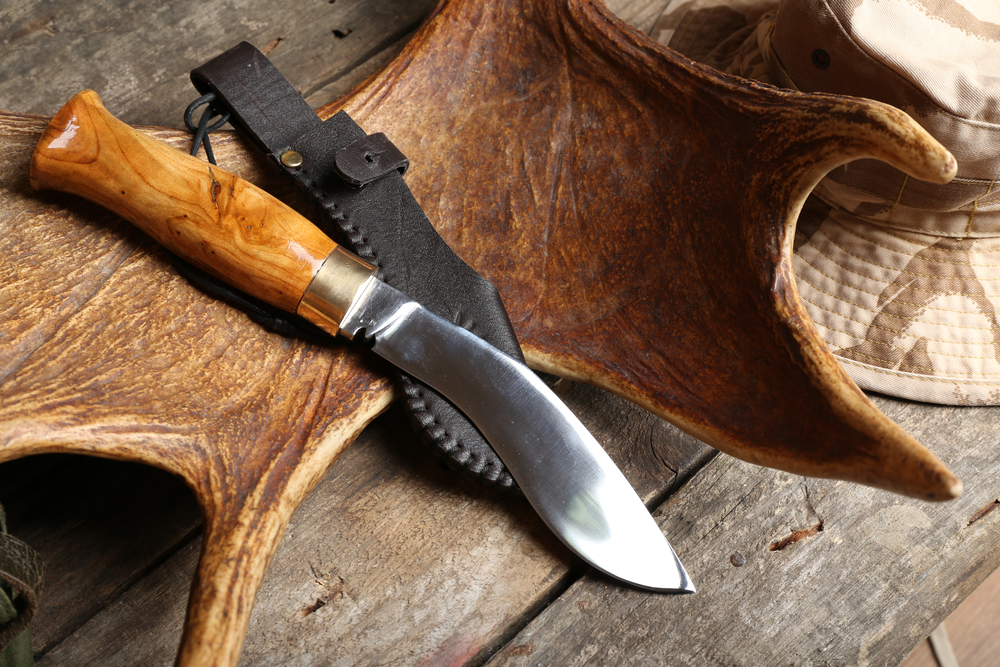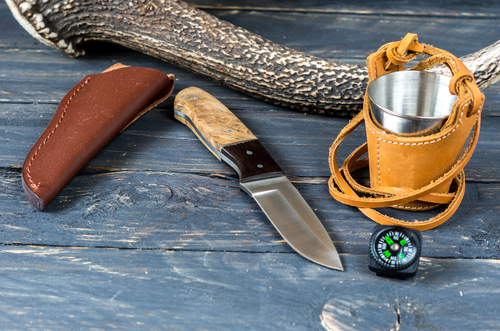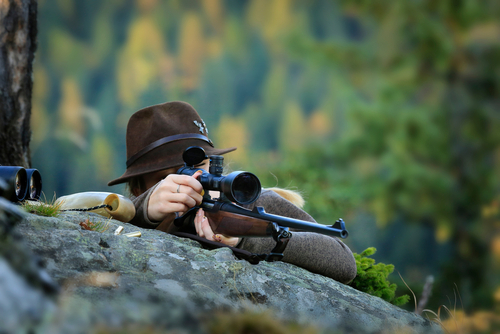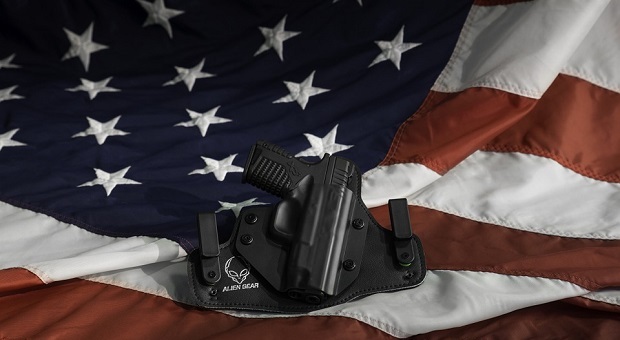Hopefully, you never have to go toe to toe with a wild animal to defend yourself, but if you do, here are some tips that might help you keep your life.
What Knife to Use?
There are many types of knives out there, and some will be better than others.
For a start, go with a fixed blade knife. Pocket knives are great, and everyone should own one. However, they aren’t ideal for self-defense. Pocket knives are usually carried, as their name would suggest, in your pocket. Depending on how many things you have in your pocket, how tight your pants are, and the position you are in when reaching for it, it could take more time than you’d expect to retrieve it.
While we’re only talking about seconds of time, you only have seconds to react in self-defense scenarios. Of course, you can carry a folding knife in a sheath, but the second problem with them is that you have to open them. When you throw in the stress of being threatened or attacked, all of these attributes make a fixed blade knife a far better choice.
From there, there a still a lot of options. Bowie knives have traditionally been used when hunting boars. While some use a combination of guns and dogs to hunt boars, some still use knives. Bowie knives are large, and both sides of the blade are sharp. In general, you want something long and wieldable so that you can penetrate their body deeply and remove and stab again in quick succession while cleanly doing it. A boar dagger would be a great example.
If you already need to carry a knife on you for whatever activity you are doing in the wild, that knife can double as a defense instead of carrying two knives. You could bring something like a camp knife, which is a fixed blade and versatile. In general, as long as it is a fixed blade knife that you can reasonably use in a bad situation, it should be sufficient.
What to Do
There is no way to consistently defend yourself against an animal attack without the threat of being damaged yourself, but there are some tactical decisions you can make. The first rule is to not run away. For one, you aren’t going to be faster than any animal you encounter. Running will also, in simple terms, make you appear as a prey animal. Many animals are used to their prey, such as deer and rabbits, sprinting away from them, and this will trigger their hunting instincts. The first thing to do is to stand your ground and try to appear large. This will sometimes be enough to scare them off. They may also be confused as to what this strange two-legged creature is and not want to mess with it. This should be your first line of defense, but it isn’t always enough.
Assuming the animal attacks. The best rule is to be quick and violent. With a mountain lion, they are going to go for your throat right away. Aim for the eyes, mouth, or neck, stabbing as quickly as possible. While this is a macabre thing to say as advice, a genuine tactic is to stick one arm out. This will keep the cougar at bay by, unfortunately, allowing it to bite and preoccupy itself with your arm. There is actually a famous story of someone pulling this off against the mountain lion’s hairier cousin, the African Lion. Keep in mind that cougars are more likely to stalk what they consider prey. They aren’t usually going to stand across from you and growl to intimidate you. This means you really want a fixed blade knife in a sheathe ready to go if you’re somewhere with mountain lions.
With coyotes and wolves, remember that they travel in packs and that they’ll likely be aiming for your legs to bring you down first. The best advice is to stab at their heart, which would roughly be behind the shoulder blade.
With bears, the first thing you want to do is stand tall, wave your arms, and make noise. Do this while carefully backing away, but remain facing the bear. If you’re going to be somewhere with bears, you also may want to consider buying some bear pepper spray [1]. It is effective and may keep you from having to fight with it. If it does get ahold of you, you can try the “arm in the mouth” technique from earlier. Then, stab as violently as you can. Aim for the mouth and neck but go for the body if that’s the most accessible portion of it.
These are the major apex predators in North America, but occasionally other animals will attack. Moose have been known to attack people. While they aren’t as aggressive as predators, they are absolutely huge. Their main weapons are charging with their antlers and using their hooves to trample, stomp, and kick. For a start, the first rule to not run away doesn’t apply here. Moose aren’t predators, which means their instinctual response to a running animal is not to chase. You can also try climbing a tree if that doesn’t work. If you are charged, remember that they aren’t nimble. You can try moving to put a tree in front of its path.
Firearms
There are a lot of reasons why someone wouldn’t have a gun in one of these situations. However, having a gun would almost always be a better tool than a knife to defend yourself with.
I’ll assume that unless you’re hunting, you don’t want to be going on long walks through the woods with a rifle or shotgun in your hands ready to go. Therefore, I’ll give some pistol recommendations. As you might expect, you want a handgun that packs a punch. I would recommend something like a .40 or .45 for this. With revolvers, a .357 magnum or a .44 will work. If you’re a new shooting, make sure you have familiarized yourself with the gun and learned how to shoot. You’re going to be stressed and on edge if an animal attacks. You at least need to be confident and efficient with your shooting. Find out what kind of holster works best for you, and carry it in that so that it is always ready. You may want to practice drawing techniques [2] as well. If you do have a long-gun, a 12-gauge shotgun, a rifle chambered in a large caliber, or a semi-automatic rifle like an AR-15 would all be good choices.
Unlike with combat sports, where humans fight their fellow man, there isn’t a history or a sport of developing the best hand to hand combat techniques for fighting other animals. The best you can do be as prepared as possible.

Resources
[1] http://www.bearsmart.com/play/bear-deterrents/bear-pepper-spray/
[2] https://www.pewpewtactical.com/practice-drawing-holster/



























































































Your Kukri style knife is beautiful but not the best all around knife for the field. The other knife you show, the drop point, is more practical. I am also a fan of Bowie or “clip point” blades. I like the Russell Chute Knife for example. A fixed blade always beats a folder, but I will take what I can get, in a pinch. By the way, have you ever been attacked by a mountain lion ? I have. There is very little time to counter attack, and a gun beats a knife any time !